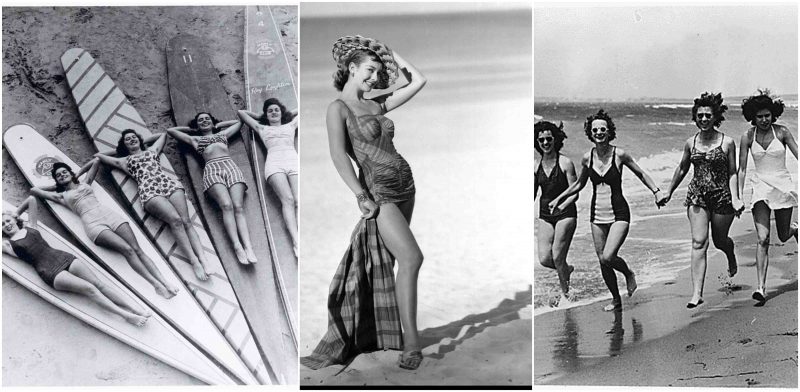Swimwear of the 1940s, 50s and early 60s followed the silhouette mostly from early 1930s.Wartime production during World War II required vast amounts of cotton, silk, nylon, wool, leather, and rubber. In 1942, the United States War Production Board issued Regulation L-85, cutting the use of natural fibers in clothing and mandating a 10% reduction in the amount of fabric in women’s beachwear. To comply with the regulations, swimsuit manufacturers produced two-piece suits with bare midriffs.
Women’s swimwear of the 1940s incorporated increasing degrees of midriff exposure. Teen magazines of late 1940s and 1950s featured similar designs of midriff-baring suits and tops. However, midriff fashion was stated as only for beaches and informal events and considered indecent to be worn in public.
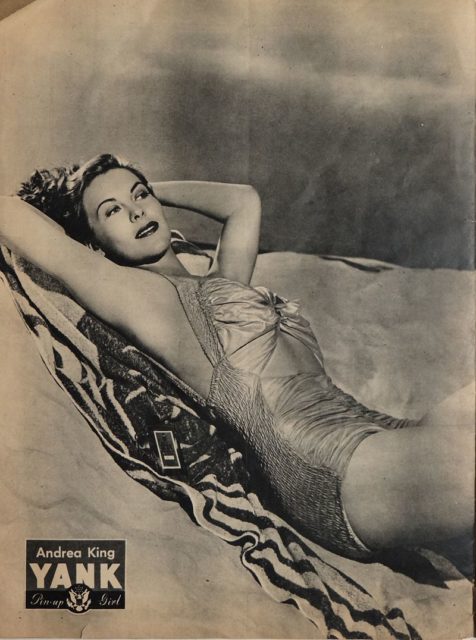
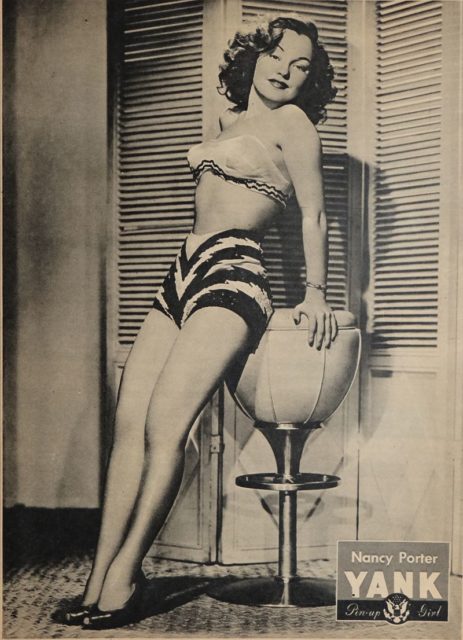
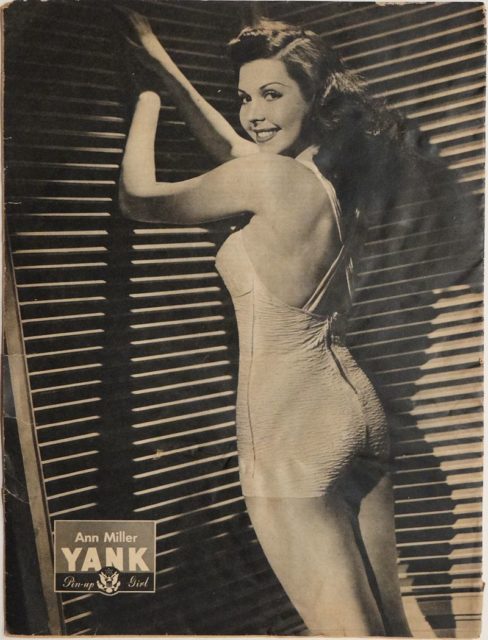
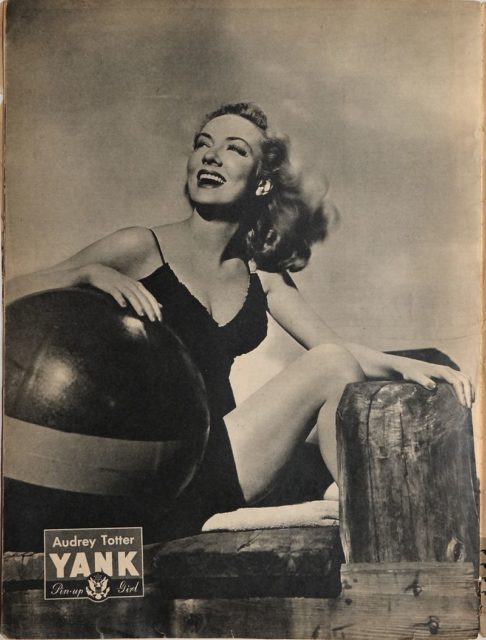
Because of the figure-hugging nature of these garments, glamour photography since the 1940s and 1950s has often featured people wearing swimsuits. This type of glamour photography eventually evolved into swimsuit photography exemplified by the annual Sports Illustrated Swimsuit Issue. Beauty contests also required contestants to wear form-fitting swimsuits.
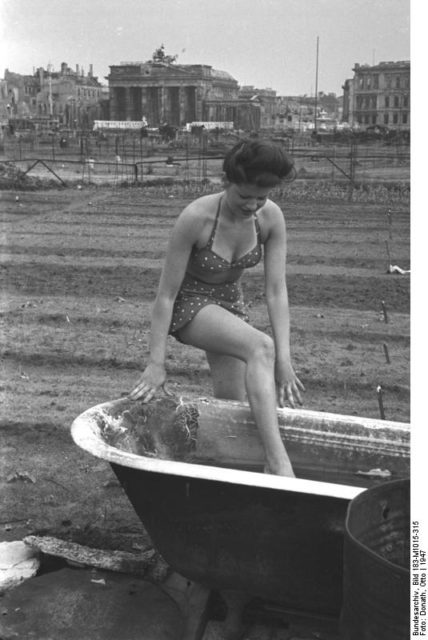
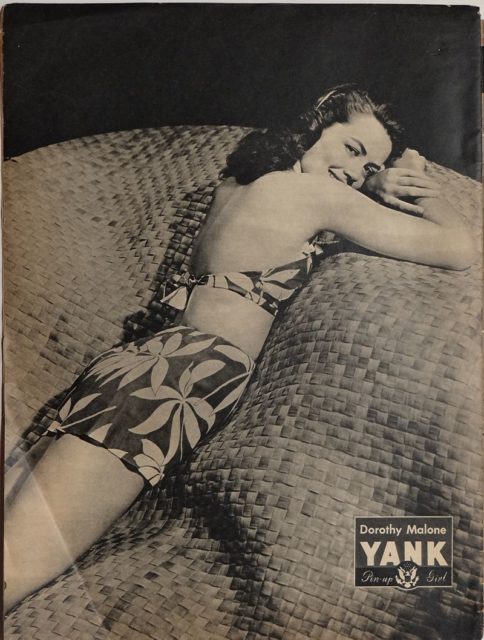
By the early 1940’s, two-piece swimsuits were ubiquitous on American beaches. The July 9, 1945, Life shows women in Paris wearing similar items. Hollywood stars like Ava Gardner, Rita Hayworth and Lana Turner tried similar swimwear or beachwear. Pin ups of Hayworth and Esther Williams in the costume were widely distributed.
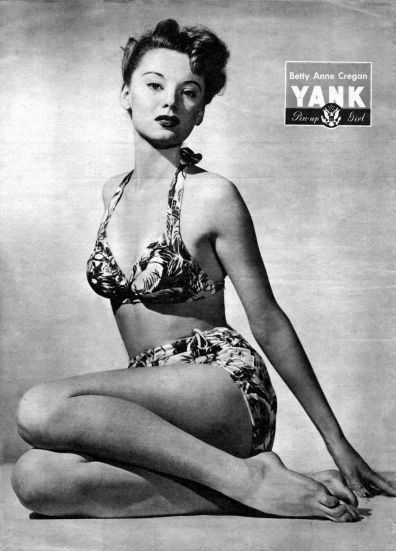
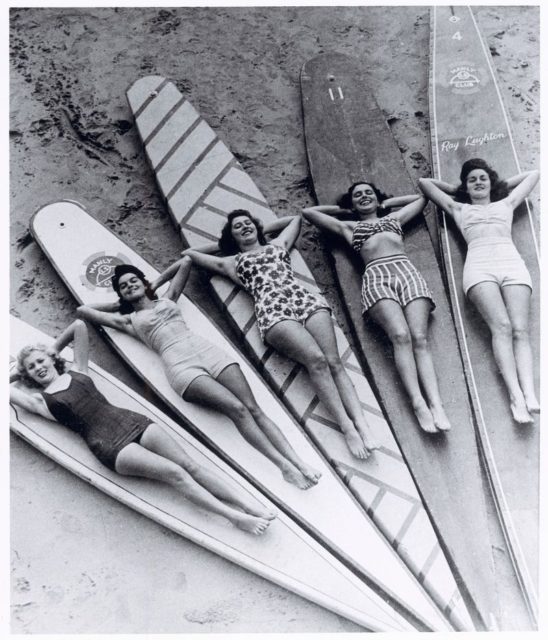
The most provocative swimsuit was the 1946 Moonlight Buoy, a bottom and a top of material that weighed only eight ounces. What made the Moonlight Buoy distinctive was a large cork buckle attached to the bottoms, which made it possible to tie the top to the cork buckle and splash around au naturel while keeping both parts of the suit afloat. Life magazine had a photo essay on the Moonlight Buoy and wrote, “The name of the suit, of course, suggests the nocturnal conditions under which nude swimming is most agreeable.
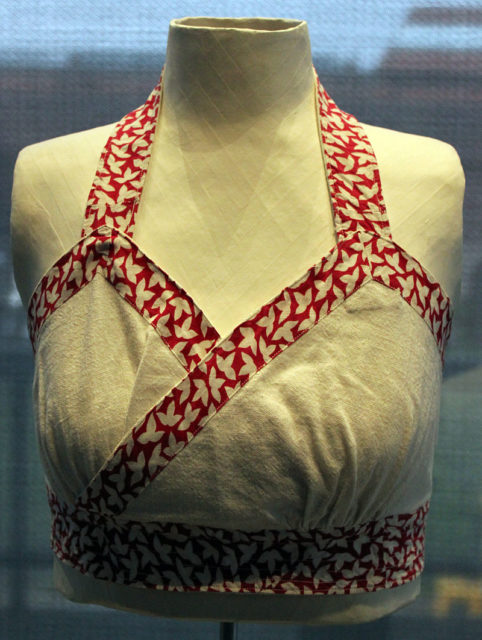
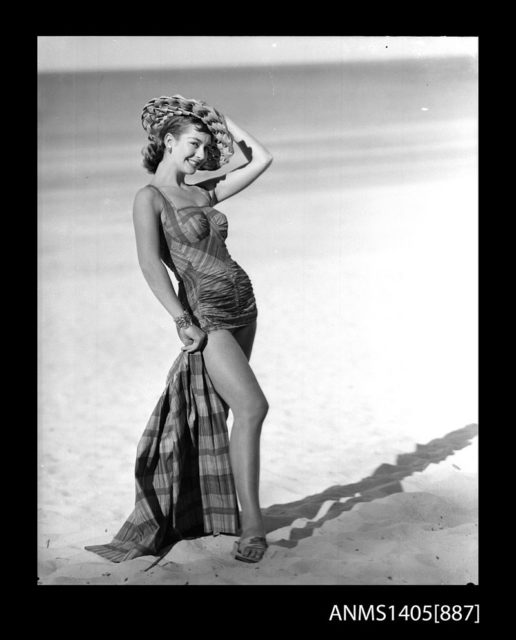
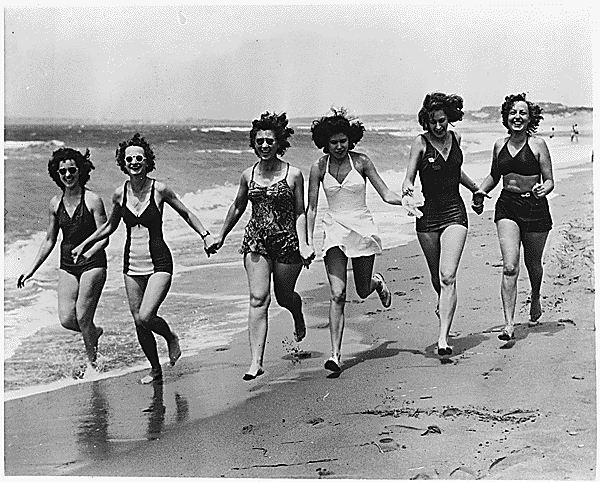
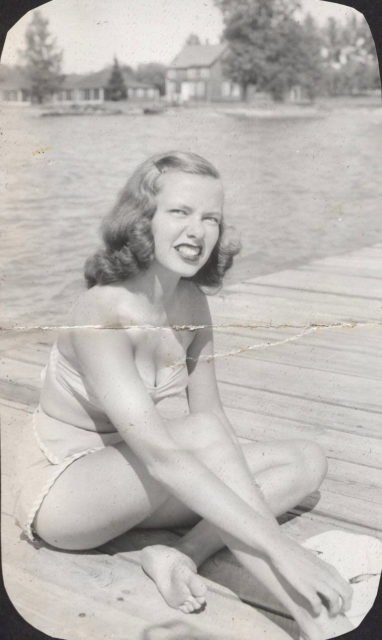
The first bikinis appeared just after World War II. Early examples were not very different from the women’s two pieces common since the 1920s, except that they had a gap below the breast line allowing for a section of bare midriff. They were named after Bikini Atoll, the site of several nuclear weapons tests, for their supposed explosive effect on the viewer.
